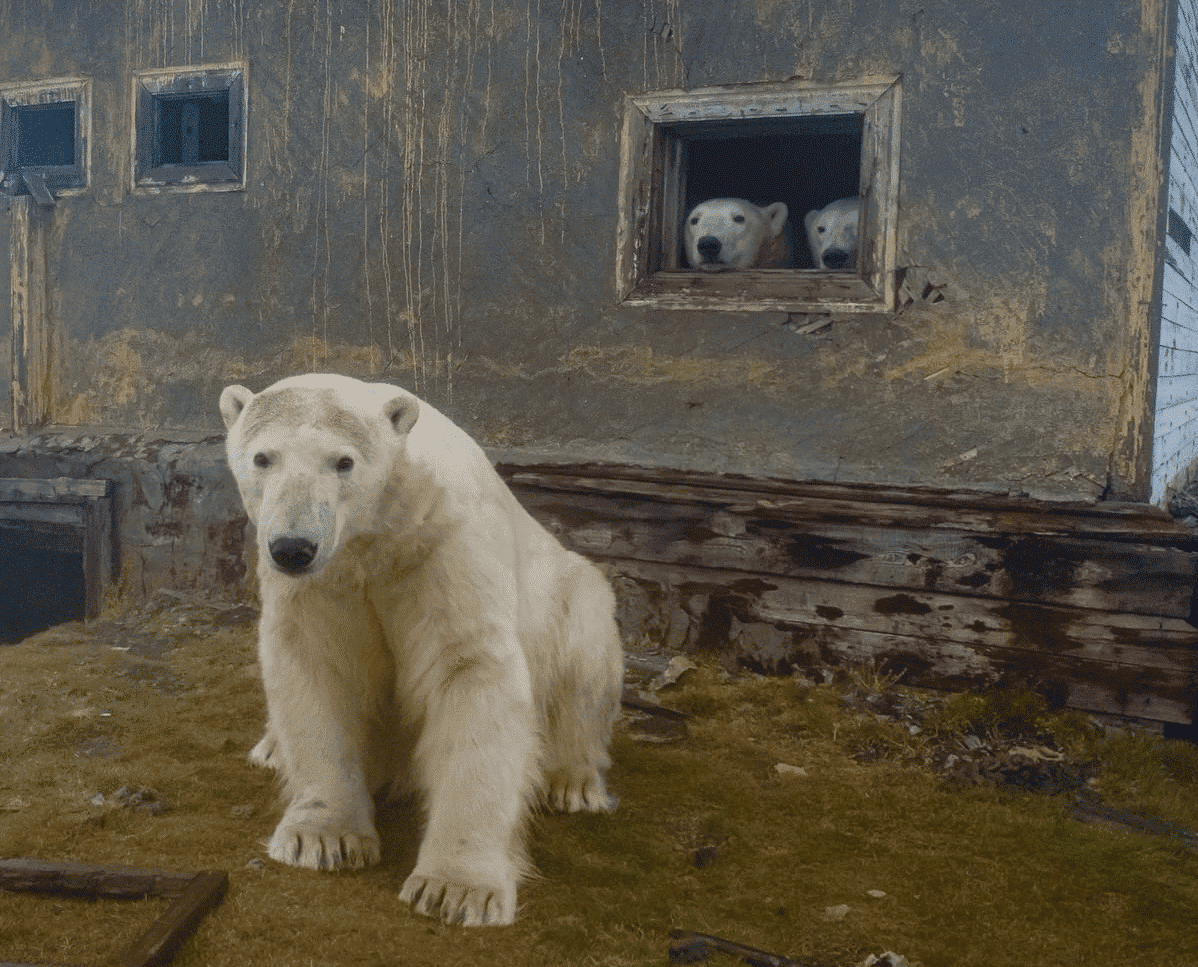In a remote corner of the world, between Russia and Alaska, lies a fascinating tale of nature’s resilience and adaptation. Russian photographer Dmitry Kokh embarked on an extraordinary journey in September 2021, capturing a series of captivating photographs that unveil an unprecedented phenomenon. Polar bears taking over the abandoned buildings of a meteorological station on Kolyuchin Island. This remarkable story, told through Kokh’s lens, sheds light on the unexpected encounters he had with these majestic creatures in a place where they had never been observed before.
A Remote Arctic Expedition
Kokh’s expedition took him through the islands of the Chukchi Sea, a marginal sea of the Arctic Ocean known for its extreme isolation and pristine landscapes. As he eloquently puts it, “Being the farthest and most Eastern part of the Russian Arctic, this place is very hard to get but also difficult to forget.” He and his team navigated the harsh terrain by sailing yacht. Covering more than 1,200 miles of untouched landscapes, lost-in-time villages, and diverse wildlife.
The Quest for Polar Bears
Kokh’s original quest was to capture the essence of polar bears in their natural habitat, with Wrangel Island being the focal point of their expedition. Wrangel Island is renowned worldwide for its population of polar bears, attracting wildlife enthusiasts and photographers alike. However, the year 2021 brought an unexpected twist, as the island appeared devoid of its iconic polar bear inhabitants. The reasons behind this absence may be attributed to the unusually cold summer, which altered the bears’ migratory patterns.
A Serendipitous Discovery
Nature, it seems, has a way of surprising those who seek its wonders. As Kokh’s team sailed near the Northern coast of Chukotka, they noticed a peculiar sight on the Kolyuchin Island. An island located just 6.8 miles (11km) north of Russia’s Chukotka Peninsula. The abandoned buildings of a weather station, erected in the 1930s and left desolate since the early 1990s, suddenly became the backdrop for a wildlife spectacle. “When we passed through the Kolyuchin Island, we saw some movements in the windows of the abandoned buildings there,” Kokh recalls. “And when we got close—those were bears!”
Polar Bears in an Unexpected Habitat
What makes this encounter so extraordinary is the fact that polar bears had never before been witnessed inhabiting the abandoned structures of the weather station. The reasons behind their uncharacteristic presence in this environment remain a subject of curiosity and wonder. Kokh’s lens managed to capture intimate and detailed photographs of these polar bears, both inside and outside the deteriorating buildings. Some of the curious bears would even peek out of broken windows when they spotted the photographer nearby, creating unique and unforgettable moments.
Kolyuchin Island’s History
To understand the significance of this encounter, one must delve into the history of Kolyuchin Island. This small tundra-covered island measures only 2.8 miles (4.5km) in length with a maximum width of just 0.93 miles (1.5km). For about nine months of the year, the sea surrounding the island is covered in ice, making it a challenging place to inhabit. Interestingly, archeological evidence suggests that this remote island was inhabited over 1,500 years ago.
In 1934, Soviet scientists constructed a polar station of the Northern Sea Route on Kolyuchin Island. This station served its purpose until 1992 when it was permanently closed, leaving behind a deserted outpost in the Arctic wilderness. The island, once a hub of human activity, became a testament to the relentless march of time and nature’s reclamation.

Award-Winning Photography
Dmitry Kokh’s remarkable photographs from this unique encounter did not go unnoticed. In a 2021 Russian photography contest organized by National Geographic, one of his images, featuring a polar bear leaning out of a broken window, claimed the prestigious “Best Image of Wildlife in an Anthropogenic Environment” award. This recognition highlights the profound impact of his work, capturing a moment where nature and human structures coexist in a way rarely witnessed.
Polar Bears’ New Playground
The story of Kolyuchin Island and its unlikely inhabitants offers a compelling narrative of nature’s ability to adapt and thrive even in the most challenging circumstances. Today, the polar bears on the island have seemingly embraced their newfound playground. A playground within the abandoned settlements and land entirely to themselves. This remarkable phenomenon is a testament to the enduring spirit of wildlife. As well as their remarkable capacity to find shelter and sustenance in unexpected places.
Exploring Dmitry Kokh’s Work
Dmitry Kokh’s journey through the Chukchi Sea and his captivating photographs of polar bears in the abandoned buildings of Kolyuchin Island serve as a poignant reminder of the beauty and resilience of the natural world. If you’re interested in exploring more of his work, you can visit his website and follow him on Instagram. His photography offers a glimpse into the hidden corners of our planet and the incredible stories waiting to be discovered.
Conclusion
The story of polar bears taking over the abandoned buildings on Kolyuchin Island is a testament to the extraordinary encounters that nature can offer. Even in the most remote and unexpected places. Dmitry Kokh’s photographs not only capture the visual beauty of these moments but also evoke a deeper appreciation. One for the profound connection between wildlife and the environments they inhabit. This remarkable tale of adaptation and resilience is a testament to the enduring wonders of the natural world.
Up next:
Polar Bear Found Swimming in Hudson Bay, Canada
Watch: Polar Bear Cubs Taking Their First Steps
Join our Forum for free today!

- The Kleptomaniac Cat That Rules Houston - July 20, 2024
- Elephant Makes a Lifelong Friend at Sanctuary in Tennessee - July 14, 2024
- Evidence For World’s Oldest Fossilized Forest Discovered in New York - July 11, 2024

